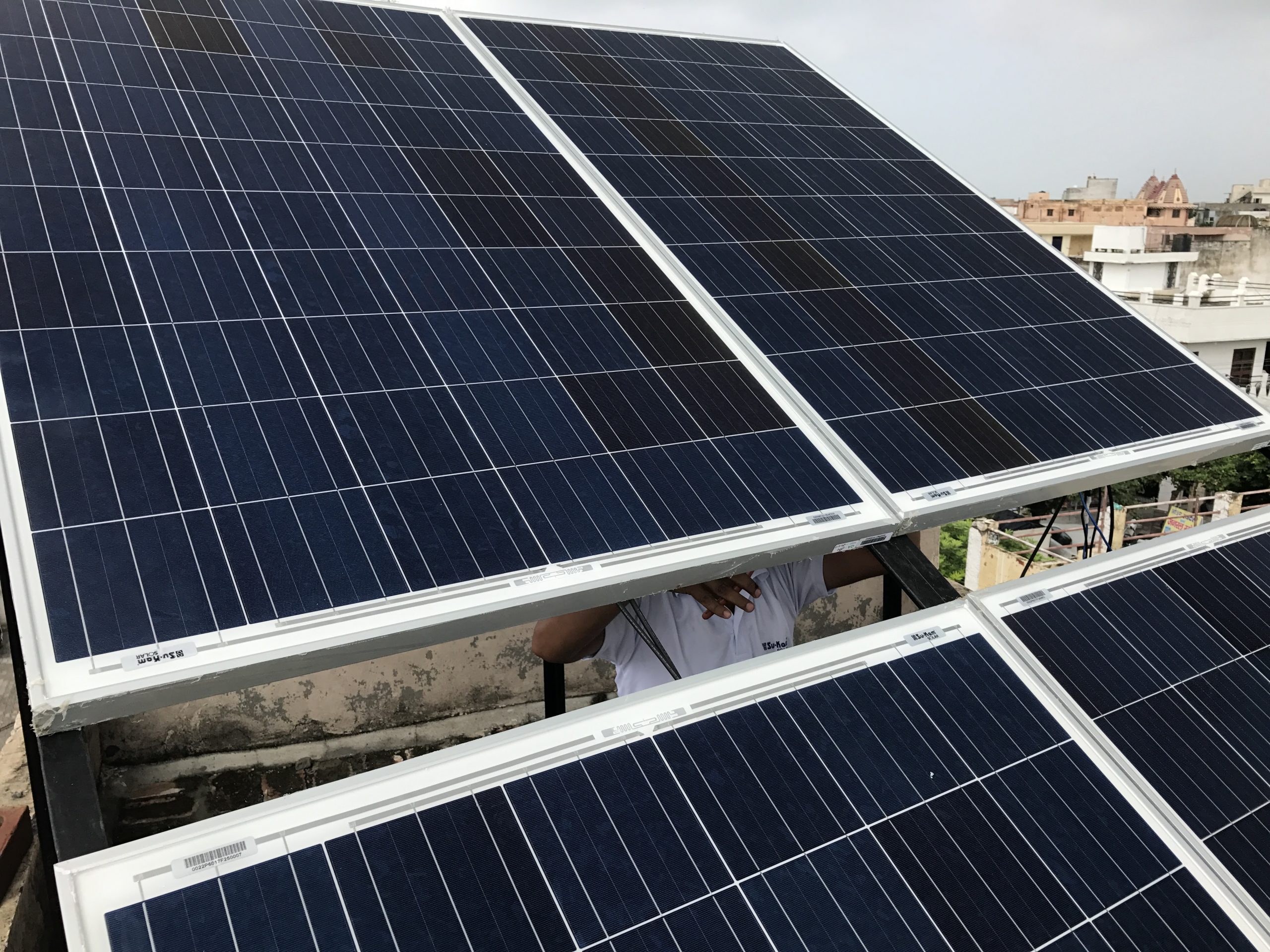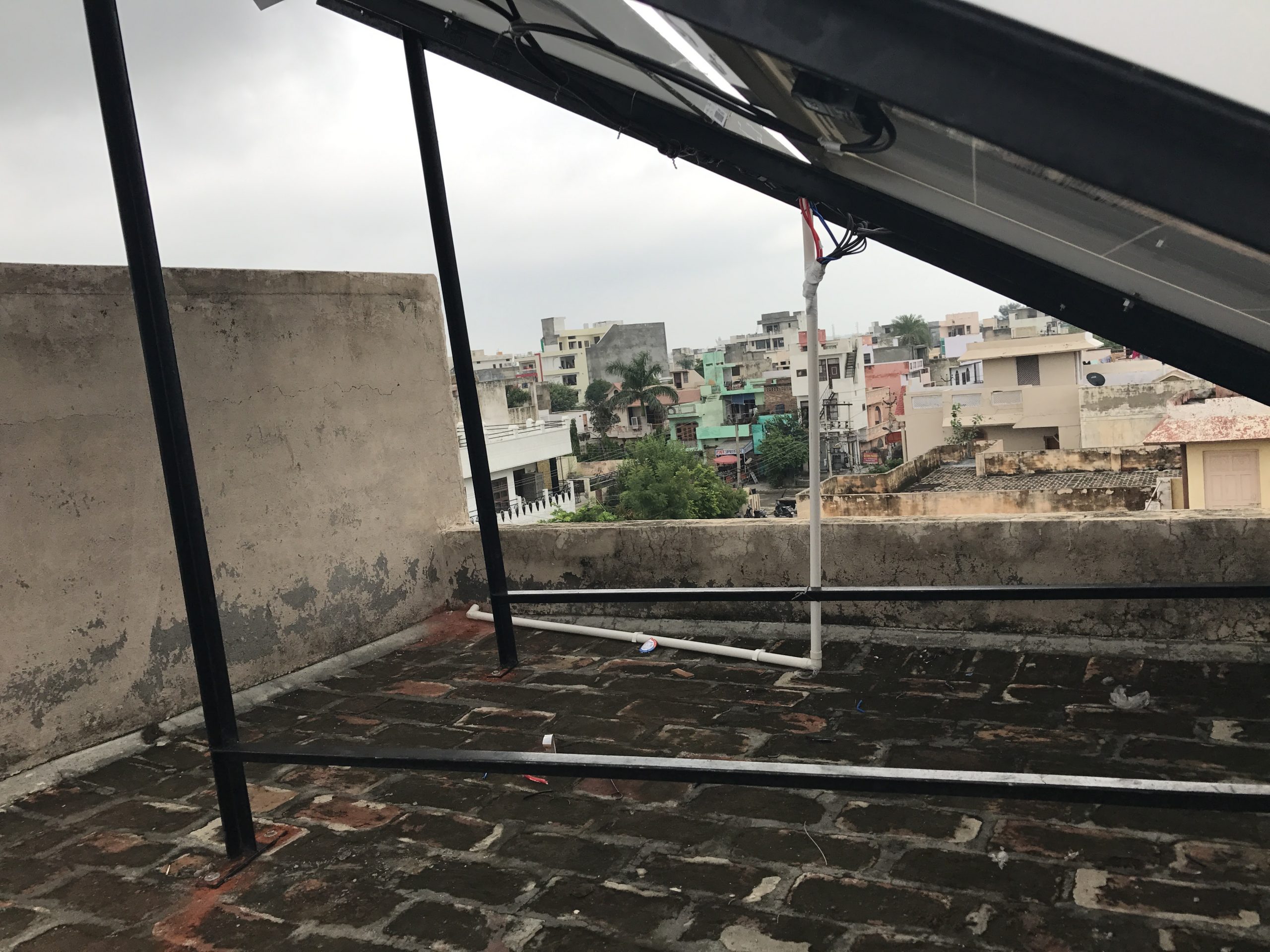Solar powered home
And breaking silence over here, last few months went quite busy. I travelled to Cambodia, Singapore, Taiwan and Hong Kong recently for various tasks from APNIC’s IXP workshop in Cambodia to SGNOG in Singapore, APNIC 44 in Taiwan and so on. Apart from this, I went for solar power setup at home here in Haryana since grid has been quite unstable (specifically this year). I think the overall grid is OKish but it’s quite bad in my city due to the construction of an overhead road from where a high voltage line is crossing. That has lead to regular long outages in the area. I think in terms of formal load shedding things are getting better and I am certain Indian Govt. will be able to reach its target of 24 x 7 supply without any shedding before 2022. That would be the key part as we go for electric vehicles in India. But still, I think we won’t get a good stable grid for at least next 6-7 years. Checkout Vidyut Pravah website which gives an idea of load and demand across India. And here is data for Haryana.
Reasons for the poor grid
- High electricity stealing in rural areas which results in most of the local electric companies staying in the losses. Political issue and solution aren’t simple.
- Extremely poor or I would better say - zero planning when putting cables which results in untidy wiring and it is impacted by rains, small winds, tree branches and what not.
- Stupid rules like one have to pay extra deposit money to increase the capacity of the electric meter. While a large number of middle-class families have multiple air conditioners (each with at least 1.8KW), most of them have an official load of 2KW on paper. This requirement makes it hard for grid technicians to increase load in colonies resulting in overheating and failure of transformers.
So with that being said, I decided to go for solar system setup at home. As I started exploring, I found there are two options:
- On-grid setup
- Off-grid setup
On-grid setup
As the name suggests, it’s a setup where system stays connected to the grid and such systems are without any battery. They are based on the logic that sun is in the daytime and hence max power is produced (as panels and radiation can support). Power is used to serve load, if power from panels is lower than load, the grid is used to serve remaining load. If there’s excess power, it is supplied back to the grid. Ideally one can go for a system where more energy is generated than it’s needed in the daytime so that meter can go in reverse and at night one can pull from the grid. If planned properly net usage can be close to zero effectively using the grid as storage battery (with no major cost of the battery as well as them wearing out). One very important part (and deal breaker) for such setup is that it works in sync with grid and basically the on-grid device syncs the power produced by solar with the power coming from the grid. If the grid is down, solar cannot be used at all and hence it did not make any sense for my area where the grid is unstable and primary objective of the solar system was to have stable power. Such system can very well make sense in the developed world where power is stable.
Off-grid setup
Off-grid is where one has solar panels with batteries. One runs load on panels and also charge batteries in the daytime and use batteries at night. While that is the definition of off-grid systems outside India. In India, we went more creative and our manufacturers went for hybrid systems where they are off-grid but also connected to the grid (irony, huh?). Such systems can use a mix of solar+battery and grid power to serve load. These systems can be tweaked as per need i.e to have solar as priority or grid as a priority, when exactly to use grid and when not etc. Such systems are needed in India because the grid is unstable and one may be interested in having a solar system to also act as UPS during grid failure. These systems serve load either on solar+battery or live grid and not both of them together. Handover is graceful and in less than 40ms causing no outage on connected network & servers.
Setup specifications:
- Sukam 4 x 260W solar panels producing 1.04KW
- Sukam 2 x 150AH batteries for storing power for nigh as well as UPS use
- Sukam Brainy Eco 1600 solar inverter (which has solar charge controller as well UPS system - all in one unit)
Panels produce power at 24V and all panels are connected in parallel (current sums up, voltage stays same). Both batteries give output at 12V and hence connected in series making it 24V output. Thus DC side of system is 24V. On AC side it’s usual 220V output.
Some pictures from installation day
For now, the system is configured to run load as well as charge batteries in the daytime and from evening until late night, it serves load via batteries. The system has a cut voltage configured at 24.4V (which is around 50% battery level) hence once batteries are used till 50% level, the system stops using them and keeps remaining 50% as a reserve (for cloudy times with unstable grid). When batteries reach 24.4V level system gracefully bypasses and puts the load on the grid while staying online to take over in case of grid failure.
Some numbers
Panels are rated for 260W each and hence in ideal times can produce 1KW of total power. The system is entirely 24V and hence panels produce at 24V (I have seen 28V on voltmeter during the afternoon on a sunny day). The system is expected to produce 5-6KW hr of energy in the daytime which is good enough for running load (excluding air conditioner & certain other things) for 70-75% time of the day. Batteries store 150AH and are rated at 12V and hence each battery stores 150 x 12 = 1800W each. Thus the system has 3.6KW hr worth of energy when fully charged out of which I am using 1800W to serve load and another 1800W as reserve power for grid failures. With the system, I am able to run the load on solar power (not batteries) from 8 am to 6 pm presently and on solar charged batteries till around 12 am to 1 am. This includes 2 fans, 4-5 LED bulbs, 30-40W worth of network gear (core router, a couple of switches, point to point radio for fixed wireless, DOCSIS cable modem etc), ADS-B receiver to keep eye on the sky, my laptop, cell phone (for charging), Raspberry Pi, two RIPE atlas probes, pump and light for fishes, etc. What is not included but I plan to include is TV and likely fridge as well once I finish tweaking system. The system offers 3 levels till which we can use batteries (before it falls back to the grid):
- 70% level
- 50% level
- 30% level
One can pick 30% level but that can cause issues when the grid is unstable on a non-cloudly day besides that one also needs to be sure that batteries are actually being charged in the daytime. In terms of power needed for charging, batteries take around 180 x 2 = 360W of power for charging and time depending on their level.
Some of the things which are not good about the system:
- It took Sukam over a month to fix the initial unit I purchased as auto-cut off was not happening at all. Support was friendly overall but took extremely long time with an escalated request.
- The system is not designed well around the logic of cut off and grid charging. So for instance, if I select cut-off voltage at 50% levels i.e system should run load via battery at night till they reach 50% level and after that just use the grid. And if grid charging is enabled in this case, the system ends up using batteries till midnight and after that starts using grid and charging batteries from the grid! which is quite stupid. Running 7-8hrs on battery and then charging the battery via grid is very inefficient. I expected the system to use the grid below 50% levels. Thus I ended up in disabling grid charging which probably should work fine but will be an issue during long cloudy days and power cuts.
- The option to tweak UPS system is by so-called “dip switch” which is a combination of 8 switches. Except for tweaking cut-off voltage, rest is fine. Tweaking cut-off levels via those switches is a horrible experience. I wish Sukam added a simple LCD display with a couple of buttons to digitally configure it.
That’s all about the solar setup at home!


